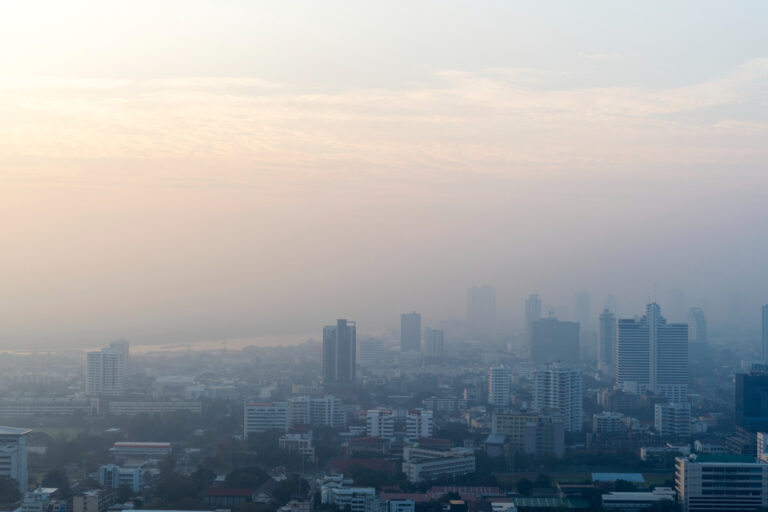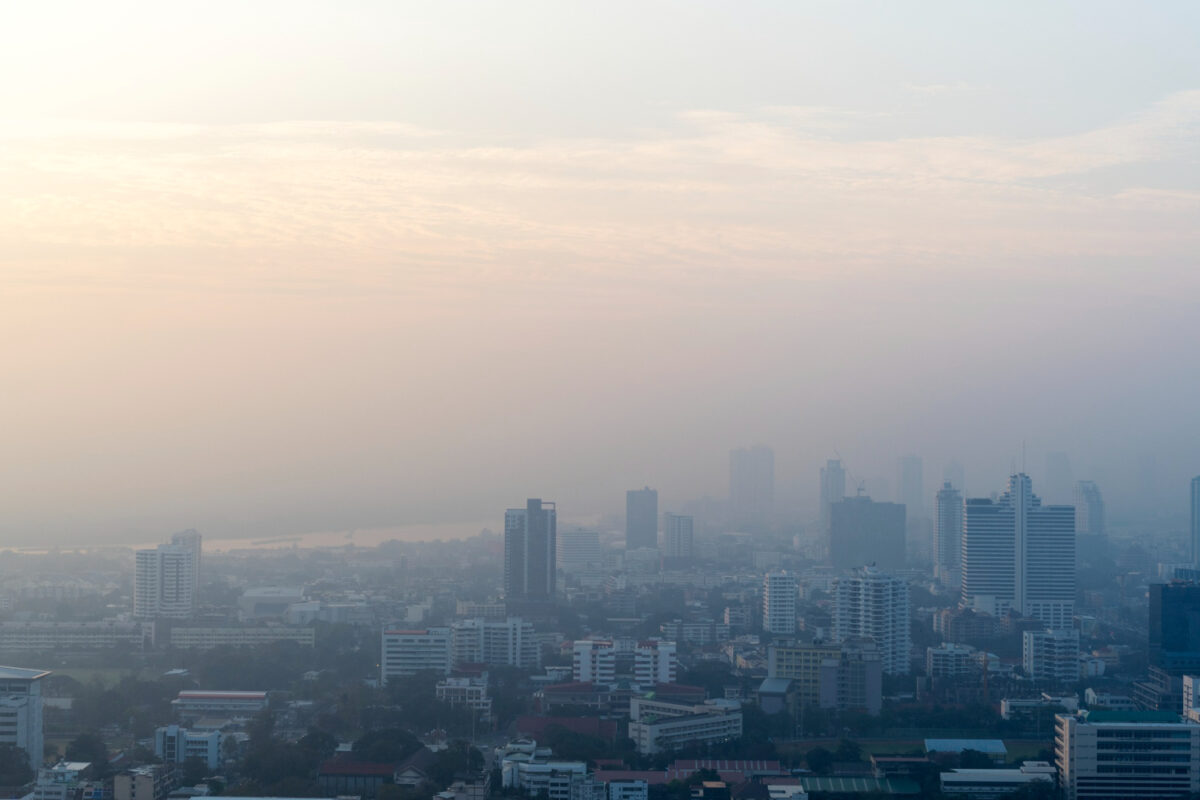/ บทความ / Understanding PM 2.5 Air Pollution and the Impacts

Bangkok, the bustling capital of Thailand, is currently facing a severe air pollution problem due to high levels of PM2.5. PM2.5 refers to fine particulate matter that is smaller than 2.5 micrometers in diameter, which can penetrate deep into the alveoli and bloodstream, causing respiratory and cardiovascular problems. In this article, learn more on what PM2.5 is, the sources of PM2.5 in Bangkok, and the impacts of PM2.5 on public health.
What is PM 2.5?
PM 2.5 is one of the eight defined criteria for evaluating the quality of the air, which refers to particulate matter in the air with diameter of less than 2.5 microns. PM2.5 is a type of air pollutant that consists of tiny particles, mainly from human-made sources such as vehicle exhaust, industrial emissions, and burning fossil fuels. Owing to its small size, PM2.5 can float in the air for extended periods of time and, when breathed in, can enter the circulation deeply. These tiny particles can travel long distances and can stay in the air for days or even weeks, causing serious health concerns.
Sources of PM 2.5 in Bangkok
The main sources of PM2.5 in Bangkok are vehicle emissions, construction sites, and open burning of agricultural waste. Bangkok is known for its heavy traffic congestion, which leads to high levels of vehicle emissions. Furthermore, there are many construction sites in the city, which produce large amounts of dust and other particles. Burning fossil fuels or environmentally non-friendly sources of fuel, specifically coal, contributes to air pollution as well. Additionally, the burning of agricultural waste is a common practice in Thailand, especially during the dry season, which exacerbates the PM2.5 problem.
The sources can be identified into two categories as follow:
Man made sources include:
- Industry activities involving combustion engines in power plants
- Fireplaces, stoves, and house wood burning
- Smoke from burning fireworks
Natural sources include:
- Dust
- Soot
- Grime
- Wind-borne salt
- Pollen
- Smoke from wildfires
Impacts of PM 2.5 on Public Health
PM2.5 has significant health impacts, particularly on the respiratory and cardiovascular systems. Short-term exposure to PM2.5 can cause irritation of the eyes, nose, and throat. These fine particles can get deep into lungs and alveoli and some may even get into the bloodstream. Exposure to these particles can affect a person’s lungs and heart and cause chronic respiratory diseases such as asthma and chronic obstructive pulmonary disease (COPD) and Lung cancer. Additionally, PM2.5 has been linked to cardiovascular diseases such as myocardial infarction, hypertension and strokes.
What can be done to reduce PM2.5 levels in Bangkok?
Prevention is better than cure and it is the most effective way to take care of yourself and loved ones to prevent unnecessary risks. Follow these tips to reduce exposure to PM2.5 pollution and protect your health during periods of high pollution.
Stay indoors as much as possible: Limit the time outside during peak pollution hours, which are usually early morning and late afternoon. Close your windows and doors to keep the polluted air out, and use an air purifier if available.
Wear a mask: When going outside, wear a mask that is designed to filter out PM2.5 particles. Look for masks that are labeled N95 or higher, which means they can filter out at least 95% of airborne particles.
Stay hydrated: Pollution can cause dehydration, so it is important to drink plenty of water to keep the body hydrated.
Eat healthy diet: A healthy diet can help support the immune system and reduce the risk of respiratory problems. Eat foods that are high in vitamins and minerals, such as fruits, vegetables, and whole grains.
Exercise indoors: Exercise can help improve the lung capacity and overall health, but during periods of high pollution, it is best to exercise indoors or in a gym with good air filtration.
Avoid smoking: Smoking can aggravate respiratory problems, and it is especially harmful during periods of high pollution.
Keep informed: Stay informed about the current air quality levels in respective areas by checking the government’s air quality index (AQI) or other reliable sources and adjust the activities accordingly based on the AQI readings.
References:
- Particulate Matter (PM) Basics
- PM2.5 dust at unsafe levels in 55 provinces
- 5 Tips For Coping With Air Pollution PM2.5
- Stay safe in the PM 2.5
- PM 2.5
- PM2.5 Air Pollutants: Tiny Particles That Can Have Huge (Health) Consequences
- How Does PM Affect Human Health?
- Chulalongkorn University: Stay Safe in the PM 2.5


